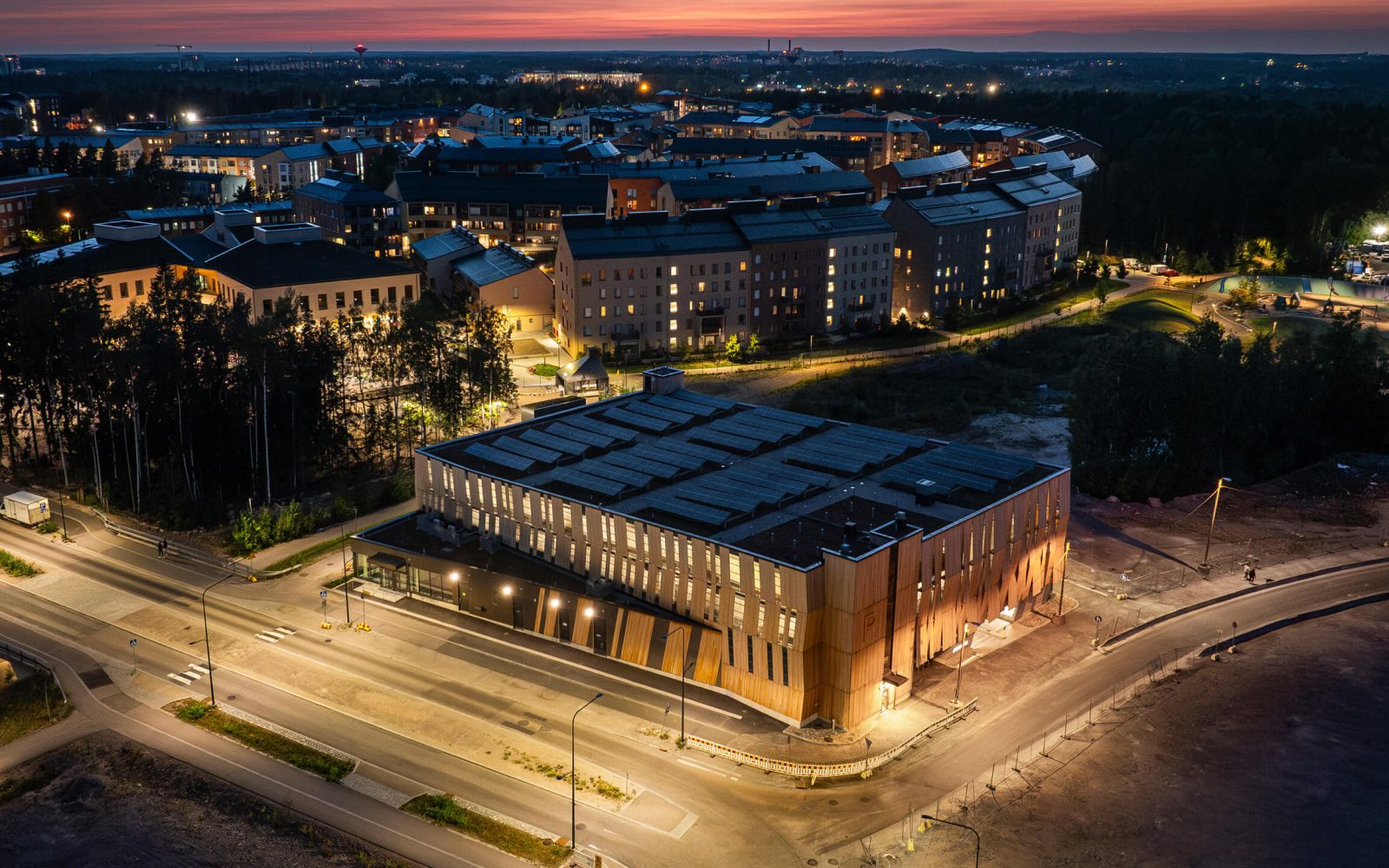
KSBR builds parking facilities efficiently, without shape limitations
KSBR is top-class among parking facility builders in Finland. Having our own professionals, efficient operating models and special expertise in cast-in-place construction ensures that we produce a diverse range of high-quality sites cost-efficiently.
Simo Särkelä has worked in the construction industry for 40 years. During that time, he’s accumulated robust knowledge and experience in the implementation of parking facilities and other projects. He’s currently Senior Advisor at KSBR, sharing the principles of high-quality construction with others and supporting customer relationships as needed.
“KSBR is the fastest contractor for cast-in-place parking garages in Finland. We have built parking garage frames since 2004. Our first extensive turnkey project, from design to implementation, was the Mikkeli hospital parking garage in 2015. Now we have over a dozen turnkey contracts behind us,” Särkelä says.
Cost-efficiency and creativity – out of the box
Parking facilities are typically built out of either cast-in-place concrete or precast concrete elements. Recently, there have been views presented in the media that a parking facility project can only be cost-efficient by making the building a specific standardised shape.
From KSBR’s perspective, this view is too limiting – and wrong. According to Särkelä, the costs of a project are not determined by the shape of the parking garage, but the method, quality and efficiency of the work. The rectangular shape is not an automatic requirement for efficiency…if you know how to build and think outside the box.
“We ensure the efficiency and competitive pricing of the construction without compromising on the quality of the final product. We make this possible with careful planning and our own cast-in-place method that offers better quality than precast concrete elements. It’s a more flexible construction method, especially for regular facilities with fewer than 500 parking spaces,” Särkelä states.
“As a flexible contractor, we can work with precast elements too, which may be the better solution for a mega-size parking facility, for example.”
Keeping quality of work in your own hands
Särkelä points out that the clients in parking facility tendering processes can find the best and most feasible option by scoring the tenders with a sufficient focus on quality.
If they short-sightedly only look for a low price at the procurement stage, it will cost them in the long run in the form of higher maintenance and repair costs over the building’s lifecycle.
“Many companies in the industry operate without employees of their own and try to lower prices by using cheap subcontractors. We do not compromise on quality or materials. We have our own skilled employees, and we consider both the completion and the quality of the work when rewarding them. And when the professionals are competent, we need less people in the worksite, which is also efficient,” Särkelä says.
“When choosing subcontractors, we trust our select partners who focus on enhancing their operations just as we do. In design and engineering, we don’t look for the lowest price but for a high-quality operator who can produce plans that fulfil our requests and streamline the construction stage. We have close connections to multiple design agencies, and structural engineers, in particular.”
KSBR is heavily invested in the planning of the implementation stage and that the employees have the courage and ability to solve sudden problems and questions quickly.
“Every year, we hold one or two training periods for our employees where we always emphasise the value of individual thinking and communication between people. Those help move things along in the worksite. Similarly, we keep our clients updated openly and punctually.”
The electric future of parking facilities
An excellent example of KSBR’s diverse range of construction projects is the Runoratsu parking facility in Espoo, completed in summer 2024. The clients wanted the parking garage to be visually distinct from the residential buildings in the area. They were pleasantly surprised by KSBR’s proposal for a round building, which was then successfully implemented.
In Runoratsu, attention was also paid to the shift towards electric vehicles, so 10% of the parking spaces were reserved for electric cars. When thinking about the future vision for parking facilities, Särkelä points out that the facilities are an excellent place for managing the electricity distribution infrastructure.
“Distributed electricity could be concentrated in parking garages, which would make the management easier and the grid construction more economical. In Norway, they’re already building battery storages in parking facilities. Finland has some way to go, but we have some ideas on the topic as well. For example, the solar panels above a parking garage should provide power directly to car batteries,” Särkelä states.
